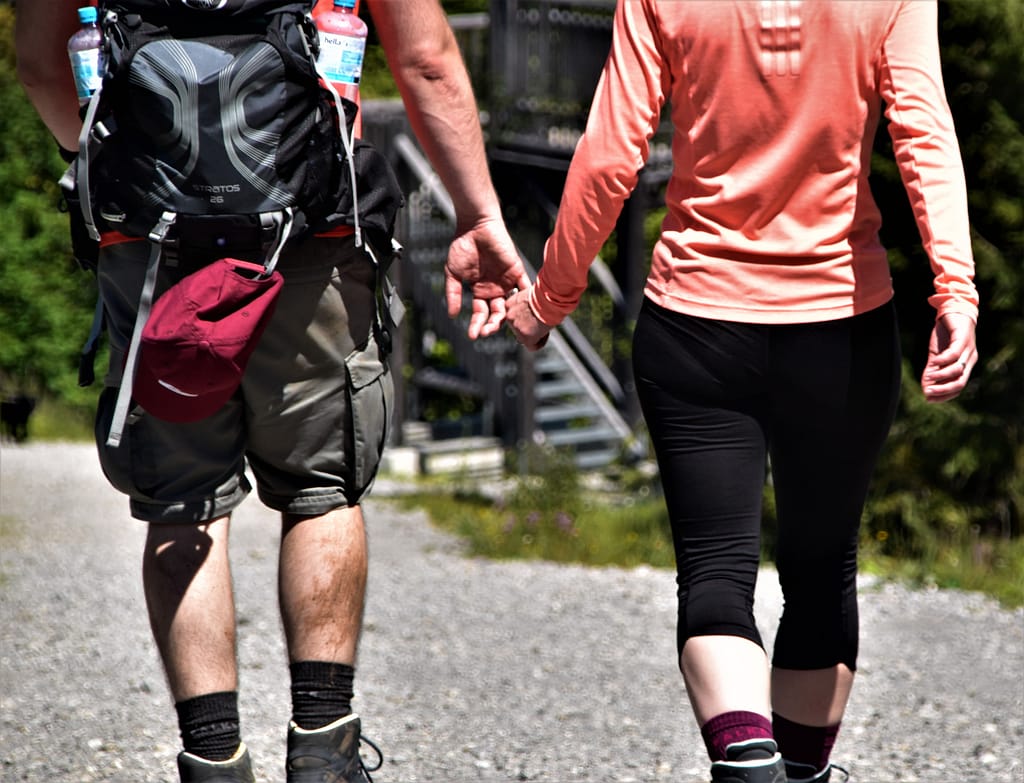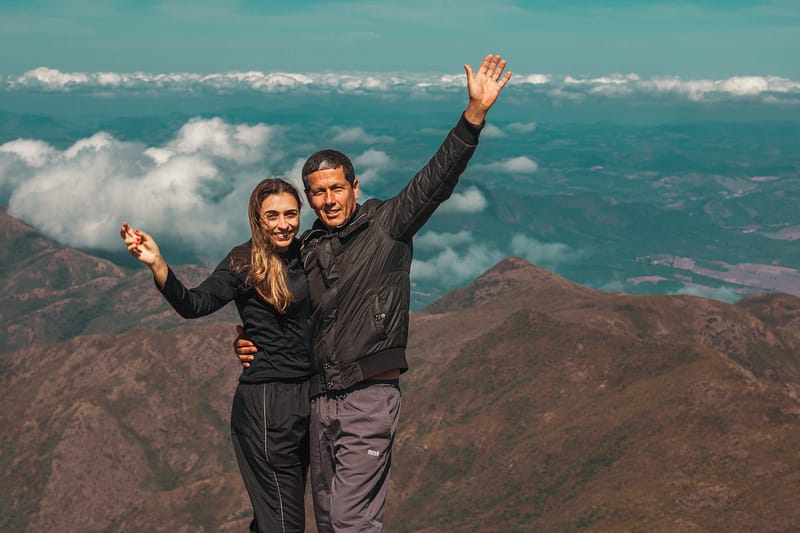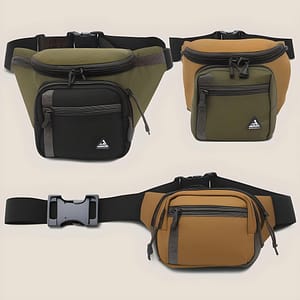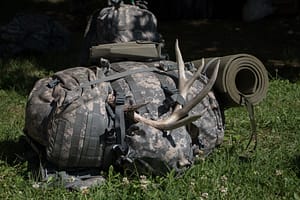A week from today you are going hiking. You look at your backpack and know that there is a limit to what the backpack can contain. For most of us, the first question that comes to mind is what to wear and how to pack only the clothing you need in the most efficient way. In this blog post, we’ll explore the top 5 hiking clothes you should wear for your next hike. From moisture-wicking shirts to durable pants and supportive footwear, we’ve got you covered.
Top 5 Hiking Clothes You Should Wear for Outdoor Adventures
1. Base Layers
When it comes to choosing the right clothes for hiking, base layers are a crucial starting point. These form the foundation of your outdoor apparel and help regulate your body temperature by wicking away moisture from the skin. Go for synthetic fabrics like nylon or polyester, as they dry quickly and are lightweight. Merino wool is also an excellent choice due to its natural odor-resistant properties.
2. Long Sleeves or Tank Tops:
Depending on the weather conditions, you can choose between long-sleeved base layers or tank tops for hiking adventures. If you expect cooler temperatures or want added protection from branches and bugs while exploring rugged terrains, long sleeves provide extra coverage. On the other hand, tank tops offer breathability in hot climates and allow more freedom of movement during strenuous activities. Whichever option you go with, ensure that your base layer effectively manages sweat to keep you comfortable throughout your outdoor journey
2. Moisture-Wicking T-Shirts
- Synthetic materials like polyester and nylon are ideal for moisture-wicking t-shirts, as they effectively pull sweat away from the body.
- Merino wool is another great option, as it naturally wicks away moisture and has odor-resistant properties.
- Moisture-wicking t-shirts with long sleeves or tank tops are available to suit different preferences and weather conditions.
- These shirts are perfect for outdoor activities where you may be sweating heavily, helping to keep you dry and comfortable throughout your adventure.
- Avoid cotton T-shirts as they tend to get damp and retain moisture when sweating. Opt for synthetic or merino wool fabrics instead.
3. Hiking Pants or Shorts
Hiking Pants or Shorts: When it comes to choosing between hiking pants or shorts, consider the weather and terrain. For hot and humid conditions, opt for lightweight shorts made from synthetic materials like nylon or polyester. If you prefer more coverage and protection, choose quick-drying pants made of breathable fabrics such as nylon or a blend of cotton and polyester. Both options should be moisture-wicking to keep you dry during rigorous outdoor activities.
Hiking Pants: Hiking pants are ideal for cooler temperatures, rough terrains, and added protection against elements like bugs or thorny plants. Look for options with zip-off legs that can convert into shorts when needed. Synthetic fabrics like nylon offer durability while maintaining breathability in case of sweating. Consider wearing long sleeves or tank tops underneath depending on the weather conditions to stay comfortable during your hike.
4. Insulating Layers
- Insulating layers are crucial for maintaining warmth and regulating body temperature in outdoor activities.
- Opt for fabrics like merino wool, polyester, or synthetic materials as they provide excellent insulation properties and wick away moisture efficiently.
- Layering with long sleeves, tank tops, pants or shorts made of these fabrics ensures proper insulation while preventing sweat from dampening your clothes.
Insulating layers play a vital role in keeping you warm and comfortable. To achieve optimal insulation and moisture-wicking capabilities, consider wearing apparel made of merino wool, polyester, or synthetic materials. These fabrics will help regulate your body temperature by trapping heat effectively while ensuring that sweat doesn’t leave you feeling damp. Layer up with long sleeves or tank tops paired with pants or shorts crafted from these insulating materials for a cozy yet dry experience on your next hike.
5. Outer Layers
1. When it comes to hiking, choosing the right outer layers is crucial for comfort and protection. Opt for breathable fabrics like nylon or polyester to keep sweat at bay while allowing moisture to escape.
2. Consider wearing a long-sleeved synthetic shirt or a lightweight Merino wool sweater as your outer layer. These materials are quick-drying and provide insulation even when damp, making them ideal for outdoor adventures.
Are there any special types of clothing for cold-weather hiking?
When venturing into cold weather conditions for hiking, it is crucial to properly prepare and equip yourself with the appropriate clothing to ensure comfort, safety, and optimum performance. Fortunately, there are indeed special types of clothing designed specifically for cold-weather hiking. Here are some essential garments to consider:
1. Base Layers: Base layers are the foundation of any cold-weather clothing system. They are designed to wick away moisture from your skin while providing insulation. Look for base layers made from moisture-wicking and quick-drying materials like merino wool or synthetic blends.
2. Mid Layers: Mid layers are worn over the base layers and provide additional insulation. Fleece jackets or synthetic insulated jackets are popular choices as they offer warmth while remaining lightweight and breathable. Consider layering multiple mid-layers to adjust your insulation level based on the weather conditions.
3. Outer Layers: The outer layer is essential for protecting against wind, rain, and snow. A waterproof and windproof shell jacket is a must-have for cold-weather hiking. Look for jackets with adjustable hoods, pit zips for ventilation, and sealed seams to keep you dry and comfortable.
4. Insulated Pants: In extremely cold temperatures, insulated pants can be worn over your base layers or regular hiking pants to provide extra warmth. Look for pants with synthetic insulation or downfill, as they offer excellent insulation properties while remaining lightweight.

Hiking clothes for summer
Choosing the right hiking clothes is essential for staying comfortable, protected, and dry in warmer temperatures. Lets explore the must-have clothing options for summer hikes, by focusing on moisture-wicking fabrics, insulating layers, and the perfect outer layers for optimal comfort and protection.
1. Moisture-Wicking Options:
When hiking in the summer heat, it’s crucial to select moisture-wicking clothing to keep you dry during rigorous outdoor activities. Look for lightweight and breathable fabrics, such as nylon, that offer durability while maintaining breathability. Consider wearing long sleeves or tank tops underneath, depending on the weather conditions, to ensure maximum comfort during your hike.
2. Hiking Pants:
Hiking pants are ideal for cooler temperatures, rough terrains, and added protection against elements like bugs or thorny plants. Look for options with zip-off legs that can convert into shorts when needed. Synthetic fabrics like nylon offer durability while maintaining breathability in case of sweating. Pair these pants with long sleeves or tank tops made of moisture-wicking materials for a comfortable and dry hiking experience.
3. Insulating Layers:
Insulating layers are an essential component of your hiking clothing, even during the summer months. While the temperatures may be warm during the day, they can drop significantly at night or in higher elevations. Additionally, insulating layers help regulate your body temperature and provide extra warmth when needed.
What should I wear to protect myself from the sun when hiking?
When embarking on a hike, it is crucial to prioritize your safety and protect yourself from the harmful effects of the sun’s rays. Dressing appropriately can help shield your skin from sunburn and reduce the risk of other sun-related health issues. Here are some suggestions on what to wear to effectively protect yourself from the sun when hiking:
1. UPF Clothing:
Consider wearing clothing specifically designed with Ultraviolet Protection Factor (UPF) fabrics. These garments offer enhanced sun protection by blocking a significant portion of both UVA and UVB rays. Look for long-sleeved shirts, pants, and hats with a high UPF rating.
2. Long-sleeved Shirts and Pants:
Opt for lightweight, loose-fitting long-sleeved shirts and pants to shield most of your skin from direct sunlight. Light-colored clothing can also help reflect some of the sun’s rays.
3. Wide-brimmed Hat:
Wear a wide-brimmed hat that provides shade for your face, ears, and neck. This will protect these sensitive areas from excessive sun exposure. Avoid hats with ventilation holes, as they can allow sunlight to penetrate through.
4. Sunglasses:
Protect your eyes from harmful UV rays by wearing sunglasses with 100% UV protection. Look for sunglasses that cover a large area around your eyes and have a wraparound design to minimize light entering from the sides.
5. Sunscreen:
Look for a broad-spectrum sunscreen with a high Sun Protection Factor (SPF). The SPF indicates the level of protection against UVB rays, which are the main cause of sunburn. Make sure the sunscreen offers broad-spectrum protection, which means it protects against both UVA and UVB rays. Also, Go for a water-resistant sunscreen to ensure it stays on even if you sweat or come into contact with water. This is particularly important when hiking. Finally apply sunscreen generously to all exposed areas of skin, including your face, neck, ears, and any other areas not covered by clothing.
Conclusion
So there you have it, my fellow hikers, We’ve journeyed through the realm of clothes for hiking. As you prepare to conquer mountains, meadows, and muddy trails, remember these golden nuggets of wisdom: your hiking outfit should be as flexible as a yogi, as sturdy as a lumberjack’s handshake, and as comfortable as a bear in a well-stocked cave. From moisture-wicking marvels to pocket-packed powerhouses, your hiking ensemble is your trusty sidekick on this wild adventure called life.





